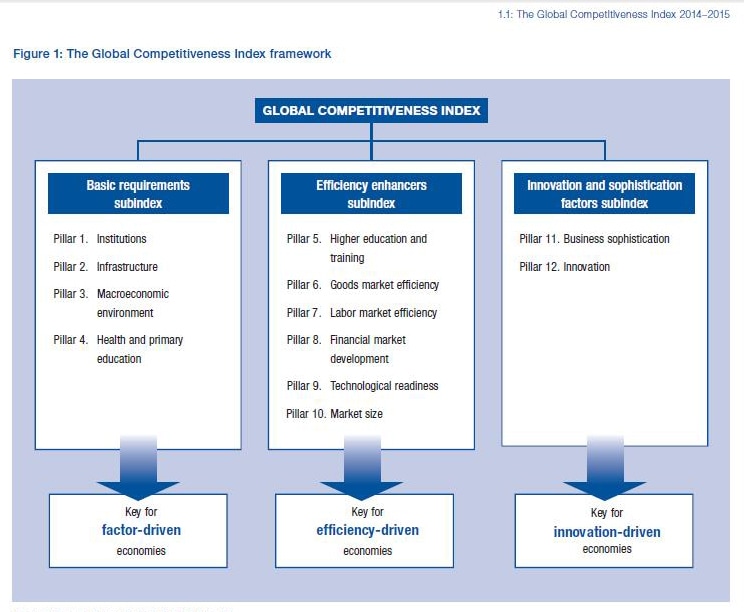When thinking about entering the global marketplace, many businesses usually think about the sale of products. Outside of those companies in the technology industry, for example web developers and a few other services related businesses, there are a few untapped industries that can bode well for business owners when it comes to the trade of services.
In July 2014, Dr. Sherry Stephenson a Senior Fellow with the International Centre for Trade and Sustainable Development (ICTSD), visited The Bahamas at the behest of the Ministry of Financial Services to speak on the topic of “Integrating Bahamian Goods and Services into Global Value Chains.” Her presentation highlighted a paradigm shift in the way we typically view Global Supply Chain, specifically as it relates to services. She indicated that Global Value Chains (GVC) drivers for example, the reduction of transportation costs, IT and telecommunications improvements, technological innovation, human capital availability, and competitive labor costs, many of these factors have to do with services.
So how can businesses tap into opportunities to export their services globally? Here are five steps to going global.
1. Know your industry and your company’s core business/service
Having a clear understanding of your business and the industry you intend to market to is critical. Before making that leap globally, do some market research to determine where your services would most likely be well sought after and easily deployed. Consider looking at countries with high-growth emerging markets (HGEMs). Remember to investigate any trade agreements as tariffs can pose barriers to trade especially in the telecommunications industry. This can impact the ease of doing business in a country or market where such restrictions exist.
2. Understand your business model and how it translates in real terms
Exporting of services is arguably the easiest and least risky way for companies to enter foreign markets. Look for opportunities to engage in joint ventures and understand any licensing requirements. According to Dr. Stephenson, services usually require less capital investment than Manufacturing – providing especially good opportunities for Micro, Small and Medium Enterprise (MSMEs).
3. Don’t be tempted to take any shortcuts – do your due diligence
Many businesses, especially small businesses, have a tendency to skip a very important part of starting a business, and that is developing a well thought out business plan. A business plan helps you to consider all the pros and cons, gather all of the information needed before you enter a foreign market, develop a solid marketing strategy, and identify possible competitors. There are many variables which may occur during the process, so having a business plan serves as the foundation for your business. When the unknowns arise, which they likely will, refer to your plan and make adjustments as needed. A business plan is a living document and should not be put away in a file drawer never to be referred to again. Proper planning and execution can only strengthen your possibility of being successful in the ever-changing global market place.
4. Understand the various ways of trading services globally
According to Dr. Stephenson, there are four “modes of supply” for trading services globally.
MODE 1: Cross-border Trade (services moving across borders)
MODE 2: Consumption Abroad (people moving across borders to consume services, e.g. tourism)
MODE 3: Commercial Presence (capital moving across borders into services activities, e.g. foreign direct investment)
MODE 4: Movement of Natural Persons (people moving across borders to produce services, e.g. temporary labour mobility for commercial purposes)
5. Don’t be afraid to seek advice and support
Most countries have a chamber of commerce, which is a great source for information when starting up a new business, even a virtual one. Information ranging from the economic climate of the market, access to experts in the legal and financial sectors, and other key aspects of doing business are usually readily available at the chamber. Search online for various chambers websites. Find out if there are trade alliances and local business agencies in the market of your choosing. Attend conferences and read, read, read. Expanding into foreign markets even in the services industry still may require conventional steps similar to the manufacturing of goods. Seeking advice from a business consultant with a specialty in global supply chain management is also a viable option.
Technology has revolutionized the way in which we live, learn and do business. We can now do business across the globe, beyond our borders, without ever having actually meeting the end user or customer. Don’t let borders inhibit the tremendous possibilities for expanding your services into the global market. If you haven’t a clue as to what sectors are more favourable and can offer a greater potential for success, consider business consulting, business analytics, and human resources management. IT services, e.g. consulting, software R&D and IT consulting are also developing at a fast pace.
In the end, “Made in the World”, definitely encompasses the manufacturing of goods, however, in order to get a product to market, services play an even bigger role. I like the example Dr. Stephenson provided with regards to the iPod. She says that more than 50% of the iPod’s value has nothing to do with merchandise components and all to do with services activities involved in conception, design, and software development. Find your niche and go for it!
For additional resources on GVC and trade visit the following sites:
- Ease of Doing Business 2014. World Bank
- Understanding International Trade Statistics
- Measuring Trade in Value Added: An OECD-WTO joint initiative
- Gary Gereffi (2010). “The Offshore Services Global Value Chain”, Center on Globalization, Governance & Competitiveness at Duke University.
- International Monetary Fund
- International Trade Centre. Market Analysis Tools.






